Can you name these 7 unusual Costa Rican animals?
As you explore the forests and wildlife refuges of Costa Rica, you’re bound to come across some furry creatures that you won’t recognize. Read on so you know what to look for!
You can visit refuges that serve to rehabilitate injured animals get a closer look at these exotic creatures at places like Project Ass and Jaguar Rescue Center. To see these animals in the wild, take a trek through the dense, primary rainforest of Corcovado National Park. This park is known for being one of the most biodiverse places on earth and is worth an extended trip with an experienced guide.
Agouti
Agoutis probably remind you of several other small rodents their appearance is somewhere between a rat and guinea pig. They have incredibly strong teeth, and they can pop Brazil nuts open like its no big deal. If they have extra food, they bury their nuts to save them for later. When startled by a predator, agoutis can jump an impressive 6 feet (1.8 m) in the air.
 Collared peccary
Collared peccaries spend their days rooting around for agave and prickly pear. Although they are harmless to humans, they can ferociously defend themselves from predators with their sharp tusks. These animals identify each other through scent and emit a strong, musky odor. Your nose will want to keep its distance.
Collared peccary
Collared peccaries spend their days rooting around for agave and prickly pear. Although they are harmless to humans, they can ferociously defend themselves from predators with their sharp tusks. These animals identify each other through scent and emit a strong, musky odor. Your nose will want to keep its distance.
 Tapir
Tapirs are distant, jungle-dwelling cousins of the rhinoceros. They have memorable faces, with noses that extend into floppy, miniature trunks. If you’re lucky, you’ll see one picking fruit and leaves with its unusual appendage. Popular tapir pastimes include wading, swimming, and munching on aquatic vegetation.
Tapir
Tapirs are distant, jungle-dwelling cousins of the rhinoceros. They have memorable faces, with noses that extend into floppy, miniature trunks. If you’re lucky, you’ll see one picking fruit and leaves with its unusual appendage. Popular tapir pastimes include wading, swimming, and munching on aquatic vegetation.
 Kinkajou
At a distance, you might mistake kinkajous for monkeys. Like a monkey, they have tails that can grip branches. They also possess feet that can rotate 180 and allow them to make hasty retreats. You’ll hear them before you see them kinkajous chatter loudly in the treetops. They have long tongues that allow them to lick honey out of beehives and termites out of termite hills.
Kinkajou
At a distance, you might mistake kinkajous for monkeys. Like a monkey, they have tails that can grip branches. They also possess feet that can rotate 180 and allow them to make hasty retreats. You’ll hear them before you see them kinkajous chatter loudly in the treetops. They have long tongues that allow them to lick honey out of beehives and termites out of termite hills.
 Olingo
Olingo is another animal that prefers the treetops. They usually travel in pairs and emerge after nightfall to gather their favorite food ripe, squishy figs.
Olingo
Olingo is another animal that prefers the treetops. They usually travel in pairs and emerge after nightfall to gather their favorite food ripe, squishy figs.
 Tayra
Tayras live in evergreen and deciduous forests. This is an omnivorous animal and a relative of the weasel. Although they’ll sample almost anything, they are partial to fruit and honey. You might see them using their sharp claws to climb up smooth tree trunks.
Tayra
Tayras live in evergreen and deciduous forests. This is an omnivorous animal and a relative of the weasel. Although they’ll sample almost anything, they are partial to fruit and honey. You might see them using their sharp claws to climb up smooth tree trunks.
 Jaguarundi
Out of all the jungle cats, jaguarundis look the least like cats. Their eyes are quite close together, and they have long, skinny bodies much like a weasel or an otter. They are voracious hunters and prowl in the morning and late afternoon for birds and small rodents. Jaguarundis are becoming increasingly rare, due in part to the destruction of their forest habitats.
Jaguarundi
Out of all the jungle cats, jaguarundis look the least like cats. Their eyes are quite close together, and they have long, skinny bodies much like a weasel or an otter. They are voracious hunters and prowl in the morning and late afternoon for birds and small rodents. Jaguarundis are becoming increasingly rare, due in part to the destruction of their forest habitats.
 Margay
Margays are nocturnal animals, so you’re unlikely to see them on daytime hikes through the forest. Because they hunt in darkness, their eerie eyes are especially large. They are tree-dwelling cats and exhibit amazing dexterity as they jump from branch to branch. Margays can even hang from a branch by a single, furry paw.
Margay
Margays are nocturnal animals, so you’re unlikely to see them on daytime hikes through the forest. Because they hunt in darkness, their eerie eyes are especially large. They are tree-dwelling cats and exhibit amazing dexterity as they jump from branch to branch. Margays can even hang from a branch by a single, furry paw.
 Zach Smith is CEO of Anywhere.
If you would like to be a guest blogger on A Luxury Travel Blog in order to raise your profile, please contact us.
Zach Smith is CEO of Anywhere.
If you would like to be a guest blogger on A Luxury Travel Blog in order to raise your profile, please contact us.
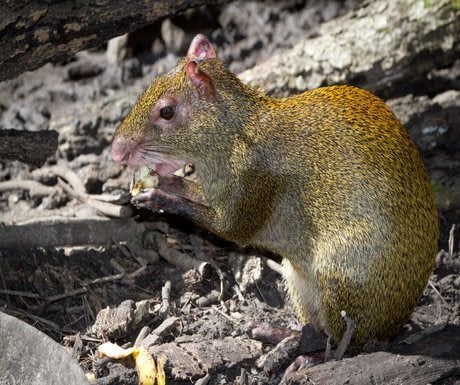 Collared peccary
Collared peccaries spend their days rooting around for agave and prickly pear. Although they are harmless to humans, they can ferociously defend themselves from predators with their sharp tusks. These animals identify each other through scent and emit a strong, musky odor. Your nose will want to keep its distance.
Collared peccary
Collared peccaries spend their days rooting around for agave and prickly pear. Although they are harmless to humans, they can ferociously defend themselves from predators with their sharp tusks. These animals identify each other through scent and emit a strong, musky odor. Your nose will want to keep its distance.
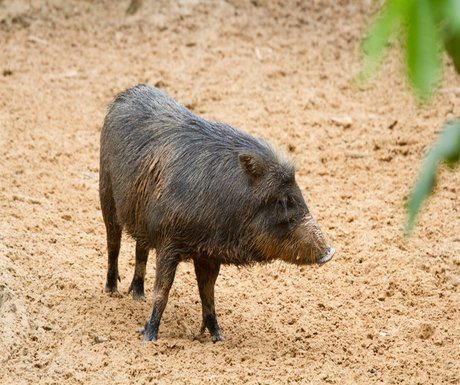 Tapir
Tapirs are distant, jungle-dwelling cousins of the rhinoceros. They have memorable faces, with noses that extend into floppy, miniature trunks. If you’re lucky, you’ll see one picking fruit and leaves with its unusual appendage. Popular tapir pastimes include wading, swimming, and munching on aquatic vegetation.
Tapir
Tapirs are distant, jungle-dwelling cousins of the rhinoceros. They have memorable faces, with noses that extend into floppy, miniature trunks. If you’re lucky, you’ll see one picking fruit and leaves with its unusual appendage. Popular tapir pastimes include wading, swimming, and munching on aquatic vegetation.
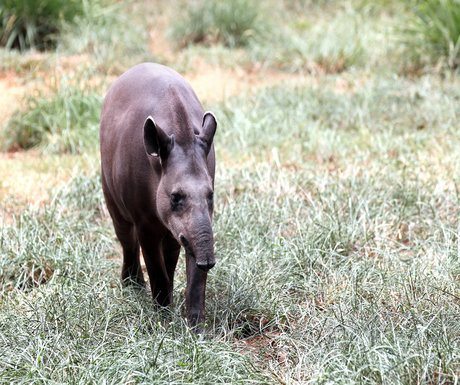 Kinkajou
At a distance, you might mistake kinkajous for monkeys. Like a monkey, they have tails that can grip branches. They also possess feet that can rotate 180 and allow them to make hasty retreats. You’ll hear them before you see them kinkajous chatter loudly in the treetops. They have long tongues that allow them to lick honey out of beehives and termites out of termite hills.
Kinkajou
At a distance, you might mistake kinkajous for monkeys. Like a monkey, they have tails that can grip branches. They also possess feet that can rotate 180 and allow them to make hasty retreats. You’ll hear them before you see them kinkajous chatter loudly in the treetops. They have long tongues that allow them to lick honey out of beehives and termites out of termite hills.
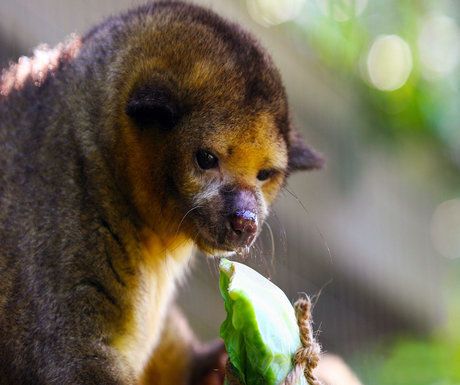 Olingo
Olingo is another animal that prefers the treetops. They usually travel in pairs and emerge after nightfall to gather their favorite food ripe, squishy figs.
Olingo
Olingo is another animal that prefers the treetops. They usually travel in pairs and emerge after nightfall to gather their favorite food ripe, squishy figs.
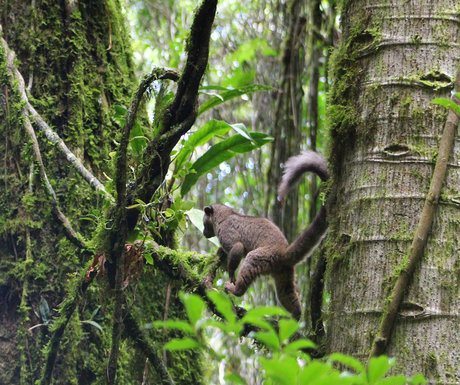 Tayra
Tayras live in evergreen and deciduous forests. This is an omnivorous animal and a relative of the weasel. Although they’ll sample almost anything, they are partial to fruit and honey. You might see them using their sharp claws to climb up smooth tree trunks.
Tayra
Tayras live in evergreen and deciduous forests. This is an omnivorous animal and a relative of the weasel. Although they’ll sample almost anything, they are partial to fruit and honey. You might see them using their sharp claws to climb up smooth tree trunks.
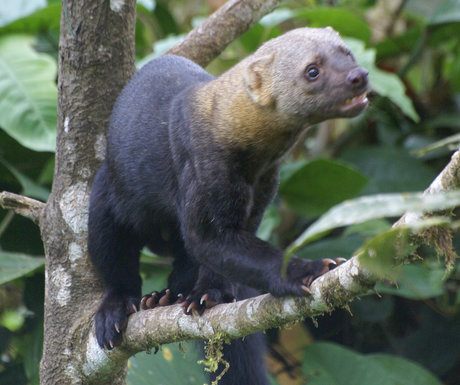 Jaguarundi
Out of all the jungle cats, jaguarundis look the least like cats. Their eyes are quite close together, and they have long, skinny bodies much like a weasel or an otter. They are voracious hunters and prowl in the morning and late afternoon for birds and small rodents. Jaguarundis are becoming increasingly rare, due in part to the destruction of their forest habitats.
Jaguarundi
Out of all the jungle cats, jaguarundis look the least like cats. Their eyes are quite close together, and they have long, skinny bodies much like a weasel or an otter. They are voracious hunters and prowl in the morning and late afternoon for birds and small rodents. Jaguarundis are becoming increasingly rare, due in part to the destruction of their forest habitats.
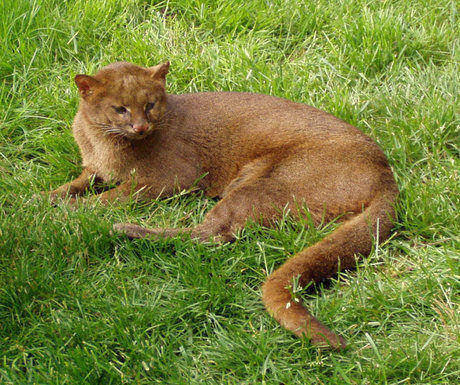 Margay
Margays are nocturnal animals, so you’re unlikely to see them on daytime hikes through the forest. Because they hunt in darkness, their eerie eyes are especially large. They are tree-dwelling cats and exhibit amazing dexterity as they jump from branch to branch. Margays can even hang from a branch by a single, furry paw.
Margay
Margays are nocturnal animals, so you’re unlikely to see them on daytime hikes through the forest. Because they hunt in darkness, their eerie eyes are especially large. They are tree-dwelling cats and exhibit amazing dexterity as they jump from branch to branch. Margays can even hang from a branch by a single, furry paw.
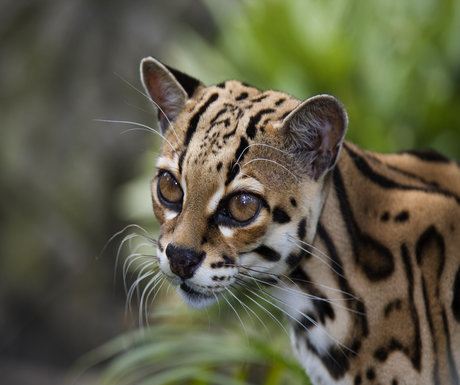 Zach Smith is CEO of Anywhere.
If you would like to be a guest blogger on A Luxury Travel Blog in order to raise your profile, please contact us.
Zach Smith is CEO of Anywhere.
If you would like to be a guest blogger on A Luxury Travel Blog in order to raise your profile, please contact us.Did you enjoy this article?
Receive similar content direct to your inbox.


OK I got the tapir, but honestly that was about it. I did recognise some of the other animals though, such as the Collard Peccary and Kinkajou. These are all such cute animals, especially the Jaguarundi!! They really do look like a weasel mixed with a cat, that is so upsetting that they’re becoming rare. I wonder if there’s a charity dedicated to them?
No, I can’t name these Costa Rican animals. I’m thinking about a big trip to Costa Rica. That’s why I’m on this page doing some research. Not much point going if I can’t put a name to what I’m hoping to see. Better learn these.